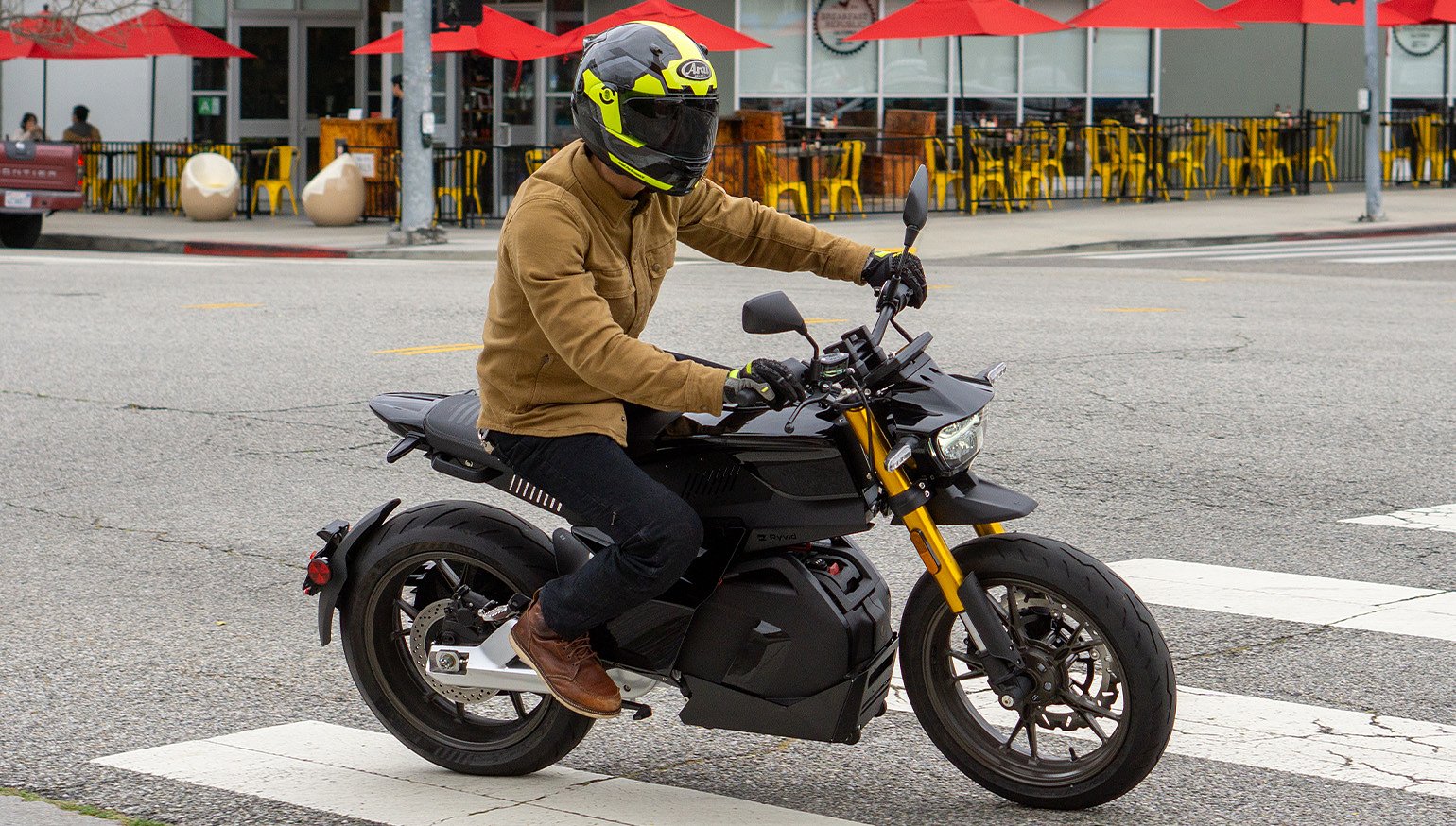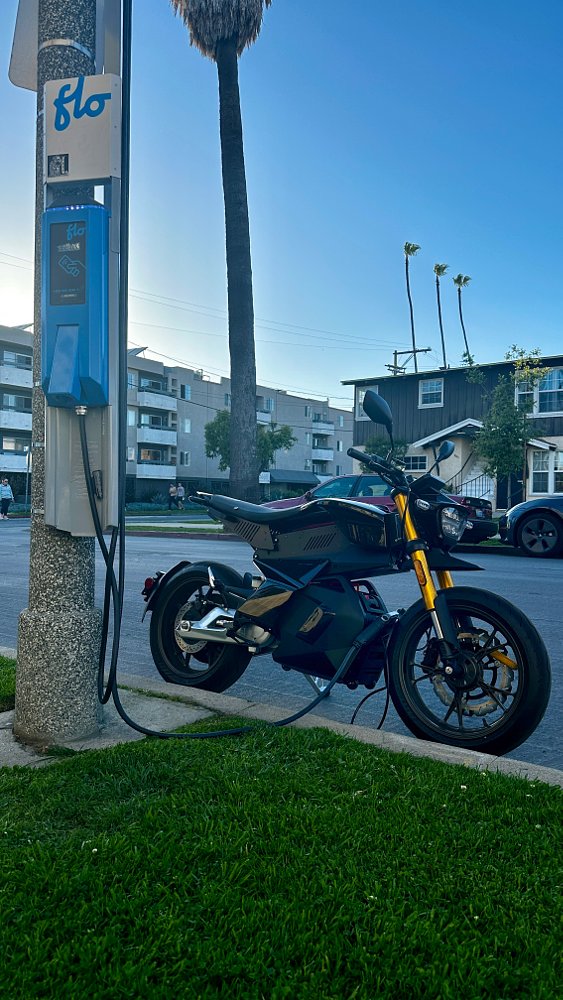“It doesn’t have enough range. It takes too long to charge. It’s too heavy. It’s too expensive.”
These are the common complaints lobbed at electric motorcycles. There’s either too much of this or not enough of that. People complain about electric motorcycles about as much as they complain about gas prices, oddly enough.
However, most skeptics are comfortable conceding one particular use case to e-mobility: city commuting. That’s where Southern California startup Ryvid hopes the Anthem, an all-electric urban commuter, can confirm the prevailing opinion in one respect while changing it in others.
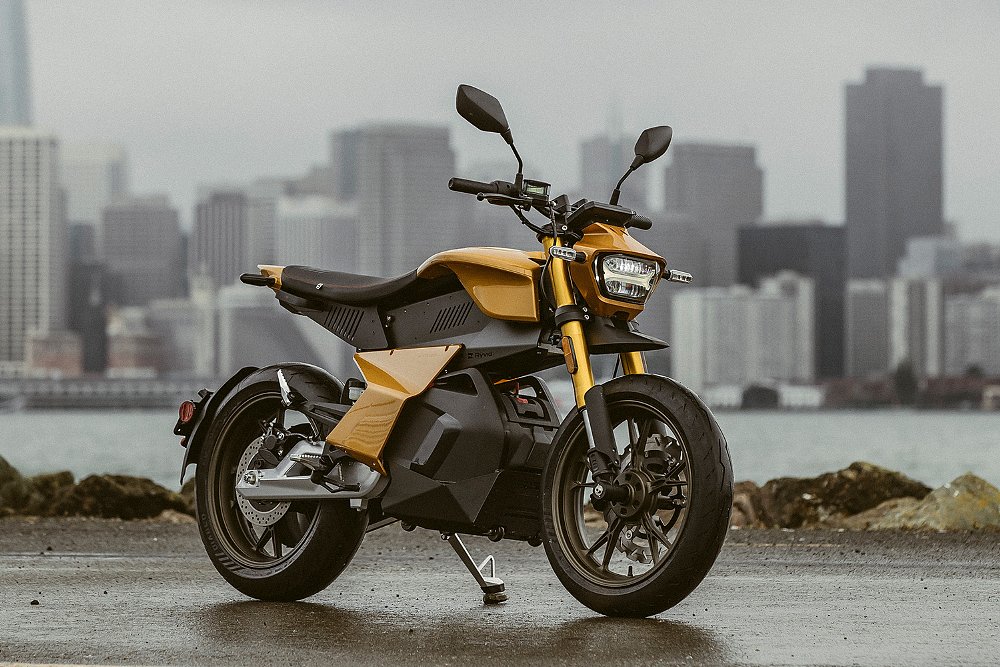
What in the world is a Ryvid?
CEO Dong Tran founded the Orange County-based company in 2021, but Ryvid is far from his first gig in the mobility space. After working for General Motors, Honda, and design agencies for BMW and Toyota, Tran became the Head of Design at ICON Aircraft, an aviation and aerospace component manufacturer. That experience ultimately informed the design of Ryvid’s first product, the Anthem.
Announced in 2022, the Anthem Launch Edition features a “monocoque-inspired” stainless-steel frame that's laser-cut, folded, and riveted together. Armchair welders can’t scowl at the welds because there are none. Instead, Ryvid bolts on a 4.3 kWh battery pack, a 72V brushless DC motor, adjustable suspension, two 17-inch wheels, and there you have it: the pint-sized but capable Anthem.

The model’s output matches its stature, más o menos. Ryvid rates it at 7.5 kW (10 horsepower) — with a peak of 14 kW (20 horsepower) — and 53 foot-pounds of torque. The real kicker is the Anthem’s 75+ mph top speed, which is a godsend for commuters connecting point A and point B via the freeway. Now, you’re probably thinking, “That’s fascinating and all, but get to the important stuff already.”
When it comes to electric motorcycles, three questions rush to the fore. How far does it go? How long does it take to charge? How much does it cost? City range is claimed at 75 miles. That total drops to 46 miles (at 55 mph) and 35 miles (at 70 mph) on the highway. When it’s time to recharge, the 4.3 kWh battery regains 80% of its capacity in 2.3 hours and 100% in 3.25 hours when connected to a 110V outlet. Those wait times dip to 1.3 hours and 1.85 hours (respectively) when using a 220V plug or Level 2 charging station. Whether all of that is worth the Anthem’s $8,995 price tag comes down to your pocketbook and transportation needs.
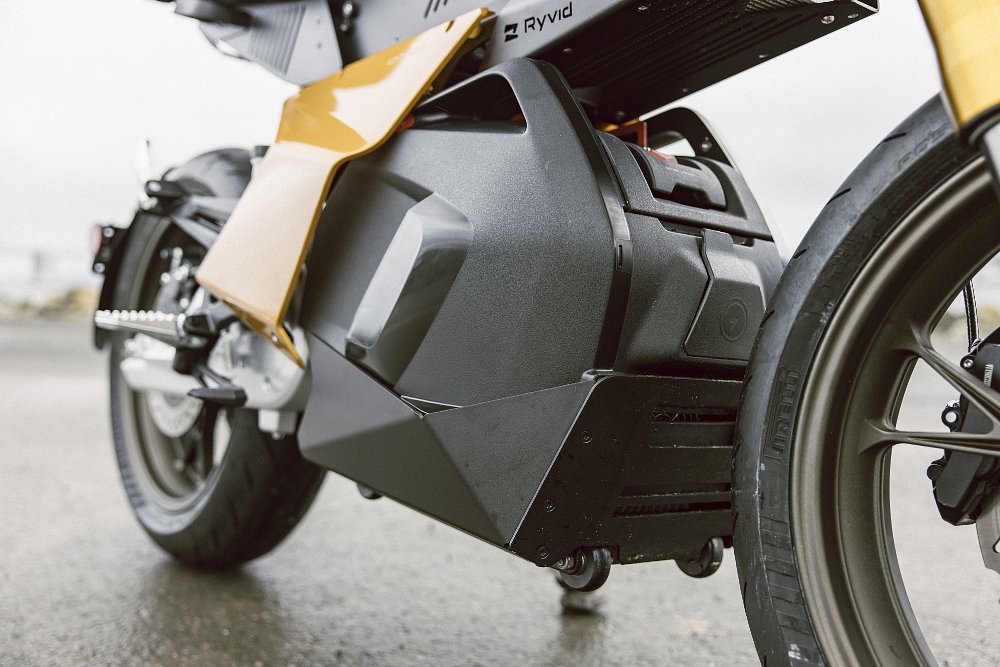
Even if I don’t have the dough to blow on such a specialized motorbike, I fit squarely into the commuter crowd. That’s why I jumped at the chance to live with the Anthem for three weeks, putting Ryvid’s claims to the test all the while.
There and back
20.9 miles. That’s the distance from my front door in Los Angeles to RevZilla West HQ in Carson. (Well, that’s the most direct route between those two points, anyway.) Hop up Venice Boulevard, skip down Interstate 405, and jump across Wilmington Avenue, and presto, I’m in the building. The trip typically lasts around half an hour. It’s a pretty standard outing, considering the U.S. Census Bureau calculated the average one-way commute lasting 27.6 minutes in 2019. There’s just one catch: 18 miles of that 20.9-mile commute is spent on the freeway.
That’s why my maiden voyage aboard the Anthem was filled with both excitement and trepidation. Will it hold its own on the I-405? Will it need to recharge when I get to the office? Should I have worn my lucky underwear today? All questions I pondered as I threw my leg over the electric commuter for the first time. As soon as I rolled down my driveway, more immediate questions arose.
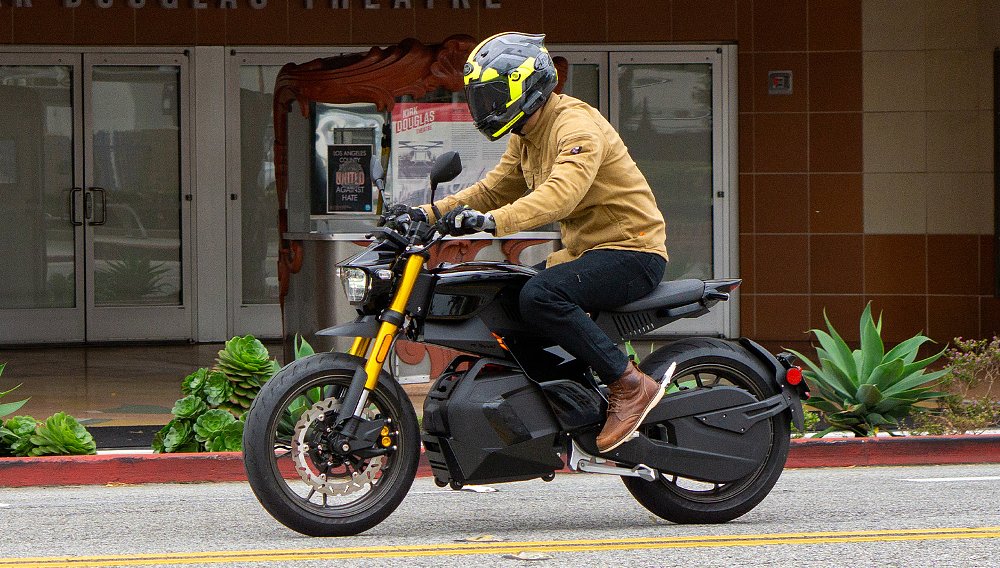
The Anthem's ergonomics are sportier than its commuting build. The rider hunches toward the low-mounted handlebar with hands placed about waist-high. The foot pegs aren’t much help, either. Mounted too high and too rearward, I often rested my arches on the pegs with my toes hanging over them. Like doing a leg dangle at a track day, the posture feels overly aggressive for this crowd. It isn’t uncomfortable, per se. It’s more awkward than anything. Fortunately, it isn’t one size fits all.
One innovation that sets the Anthem apart is Ryvid’s electronically adjustable seat. Users can alter the standover height between 30 inches and 34 inches with just the flip of a switch. Thanks to an actuator mounted to the frame and subframe, seat height adjustments don’t impact the chassis geometry. Nifty stuff, if ask me.
Riders can take advantage of the feature in several ways. For instance, when approaching a stop, I often lowered the seat for heel-down footing. As I pulled away, I then raised it for maximum legroom. Best of both worlds. Another approach is to set it and forget it, wherein the rider matches the seat height to their inseam and promptly leaves it alone. No matter your preference, Ryvid’s Ergo-Easy seat is an innovative solution that I’d love to see on other motorcycles, especially those catering to beginners. I can’t say as much for the saddle itself.
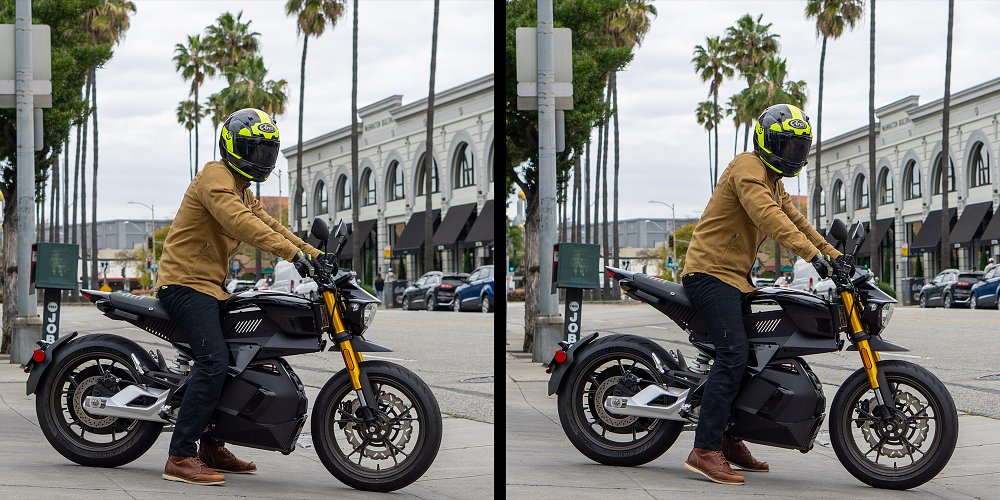
The Anthem takes on a minimalist aesthetic and so does its plank-like bench seat. It’s easy on the eyes but it isn’t easy on the hiney. Just 15 minutes in and my sit bones were barking. If you’ve ever sat on aluminum bleachers, you have a general idea of the accommodations here. Considering the pocked streets the Anthem stands to encounter, a little more cushion would have gone a long way. What’s worse is that the suspension does little to soften the blows.
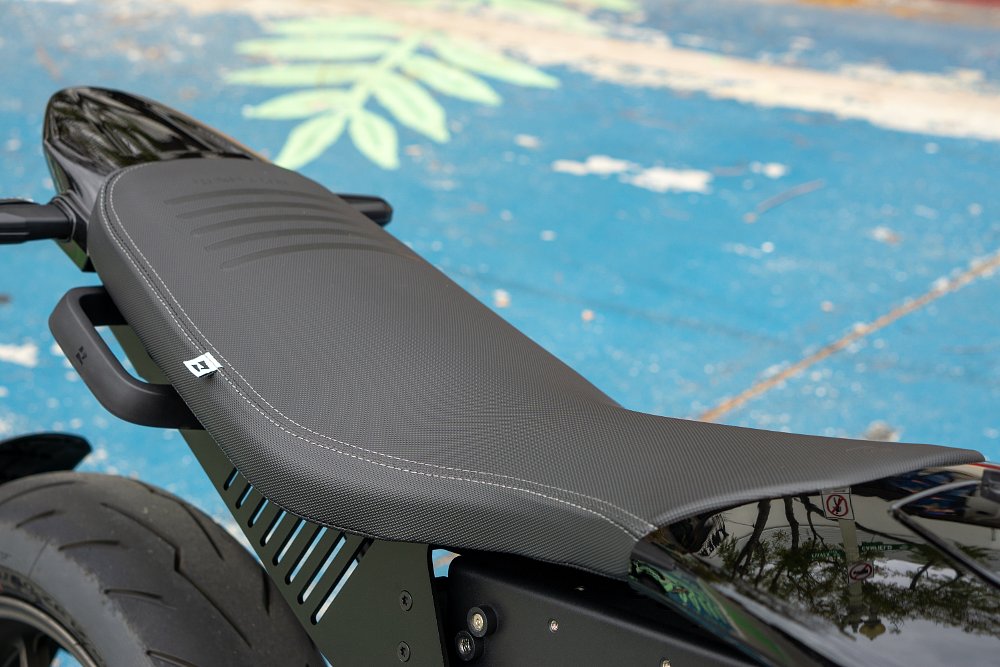
The monoshock benefits from preload and damping adjustability while the inverted fork offers damping adjustability. Sadly, all those dials and clickers can’t add suspension travel. The inverted front end yields 3.9 inches and the rear shock provides a paltry 1.3 inches. The ride reflects those numbers, too. It’s firm over most road inconsistencies and downright harsh over faster, harder hits.
I learned that the suspension was better at maneuvering around bumps and potholes than absorbing them. It’s safe to say that the Anthem is fleet of foot, but that quality that doesn’t serve its A-to-B purposes. The shock’s direct mounting left little between sharp-edged potholes and my poor old tailbone. The fork wasn’t much kinder. Even in the softest setting, it frequently deflected off bumps with far too much rebound. It was a rough start, to say the least, but the Anthem wasn’t done defying expectations.
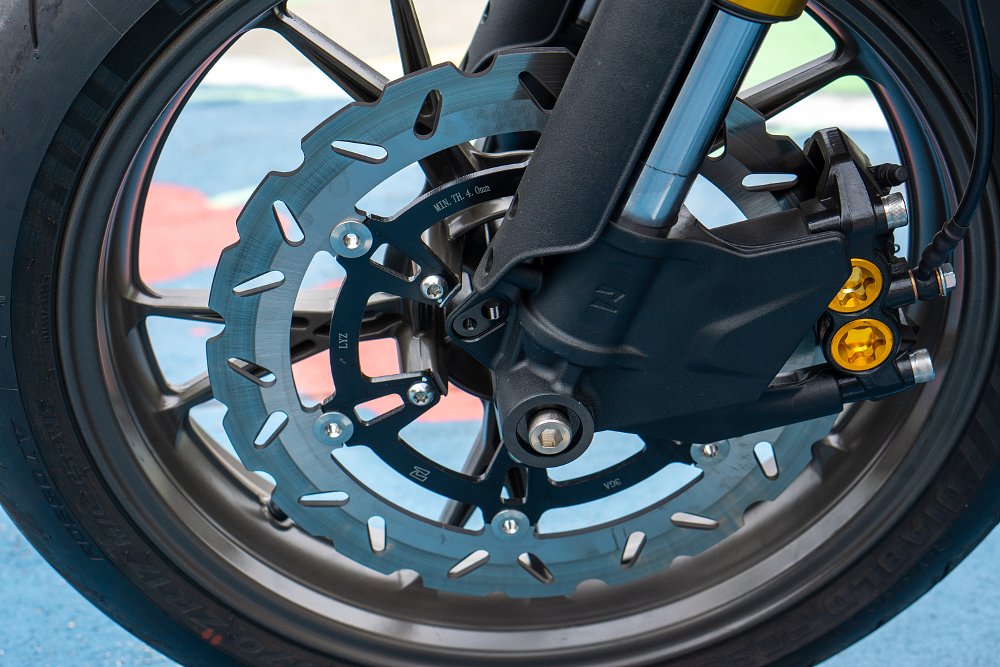
Ryvid keeps it simple when it comes to the ride modes. You get two choices: Eco and Sport. Eco limits the motor to 75 amps and a 50+ mph top speed. Just don’t expect it to get there anytime soon. Describing the powerband as linear would be an understatement. That’s not a knock against it, though. There’s an ever-so-slight lag in initial pickup, but the throttle response feels well connected to the back wheel. Micro-adjustments are immediate and accurate but not jarring in any way. It’s that poise that allows Anthem to weave through traffic like a cute girl cutting her way to the front row of a concert. That tractability goes for both modes, as well. Eco just metes out the power in an ultra-progressive manner. It’s that tortoise’s conservatism that grants the Anthem a hare’s carriage amongst faster traffic.
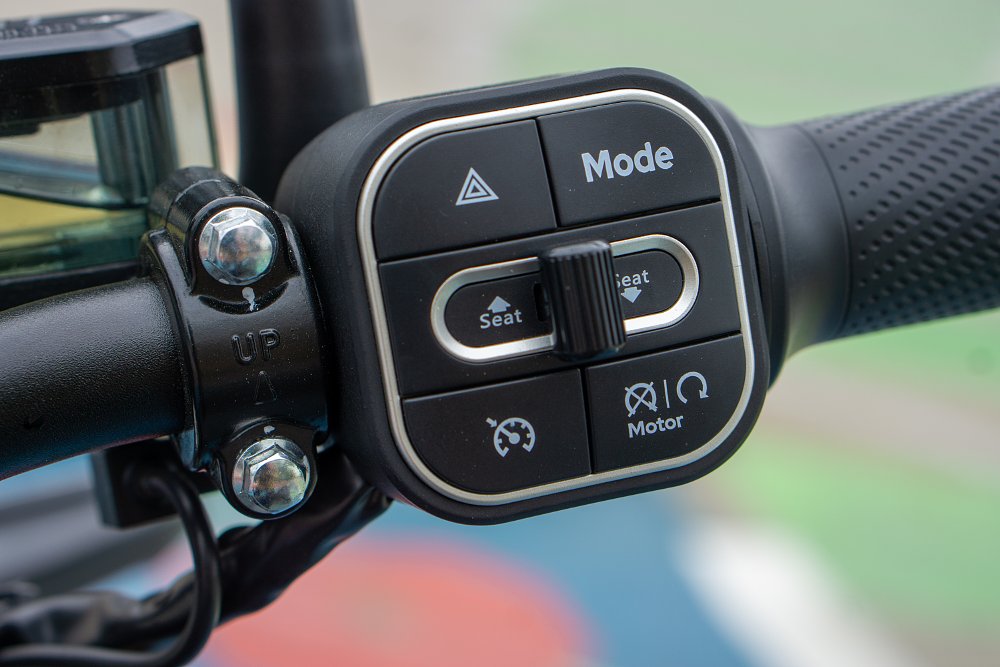
The only reason the e-commuter can keep up on the interstate is Sport mode. Without Eco’s restrictions, the motor draws over 200 amps and propels the little about-towner up to 84 mph. Even on the Southland’s speed-hungry stretch of the 405, it held its own in the fast lane. The problem is it doesn’t hold that pace for very long.
With 70% of its charge left, the Anthem’s top speed dropped to 65 mph. By 40%, it couldn’t surpass 55 mph. That’s a dangerous development when picking through the meat grinder that is Los Angeles’ freeway system. As luck would have it, my exit arrived shortly thereafter, but the experience proved that I’d rather have full power available at all times. I can adjust my route accordingly.
By the time I rolled into the RevZilla West garage, the TFT dash read 23% charge. A little over two hours on the wall socket and the Anthem was raring to go again. Though, a different approach was in order for the return trip. Instead of keeping it pinned in the fast lane, I decided to sandbag in the slow lane. The more measured clip left more power in reserve, enabling me to throttle out of trouble when, say, a white Toyota Yaris with Tennessee plates veers into my lane (you know who you are).
During my morning commute, I spent the battery’s available charge the way I spend my money on payday. That left much of the budgeting up to the Anthem. The second time around, some frugality now allowed some splurging later. I covered the same 20.9-mile route (in reverse), except, this time, I arrived with 40% charge. That meant less time to recharge at home. There’s just one catch. Well, maybe more than one. My apartment has neither a wall charger nor an elevator. Plus, I live on the third floor. I’d have to get the 87-pound battery up there somehow.
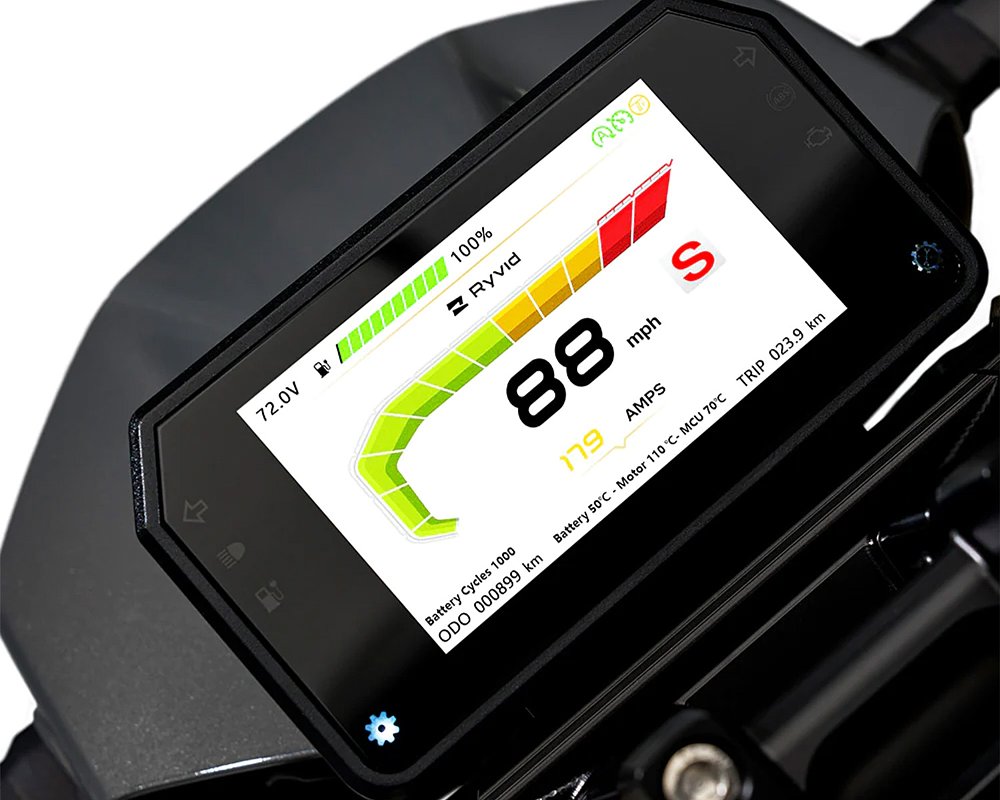
City living
The Anthem’s removable battery is a major selling point for Ryvid. The 4.3 kWh unit even comes with roller wheels and a luggage-style handle for easy transport. Unfortunately, they’re of little help on stairs. Now, Ryvid didn’t design the hefty power bank for users to carry, let alone carry it up three flights of stairs. On the other hand, I doubt I’m the only apartment dweller without a garage charger or an elevator. If you’re in my situation, I have one nugget of advice: Lift with your legs, not your back. With the nearly 90-pound battery in my arms, I felt like a World’s Strongest Man contestant carrying an Atlas Stone up each step.
Once I conquered the stairs, I plugged the battery into a socket in my office, kicked up my feet, and set my stopwatch. Not so fast, Dusty Boy. Combined with all the other electronics in my office, the battery’s electricity load tripped a fuse in my breaker box. Three unsuccessful attempts in and I finally resorted to charging the power pack in the dining room, much to the chagrin of my wife. The battery comes with an integrated fan that runs throughout the charging interval. Its hum rivals that of an overheating Mac Book (if you know, you know.) Unhappy wife, unhappy life.
To the delight of my spouse and my lower back, I eventually found a Level 2 charger in my neighborhood. Just half a block away, no less. So, I traded in my lifting belt for a FLO account and ponied up the dough for faster charge times (at around $3.50 per recharge). The Level 2 station also confirmed Ryvid’s charging estimates, as the battery recovered its full capacity (from 2%) in one hour and 41 minutes. Those quick charge intervals mean commuters can ride to work, plug in, and count on the Anthem to get them home.
It was evident that the Anthem could get me to the office and back, but the next question was could it complete the round trip without recharging? To do so, I’d need to stay off the interstate. Easy enough. I’d just take La Cienega to Centinela, Centinela to Florence, Florence to Crenshaw, oh, you get the picture. The point is that sticking to surface streets more than doubled the commute time. At the same time, I arrived at work with 51% charge remaining. Just enough for the return trip home. Well, that’s somewhat debatable.
E-mobility doubters often cite range anxiety as a deterrent. I’ve never identified with that sentiment more. I questioned whether I’d run out of charge at 20 different junctures. If I’ve burned 10% over four miles, can I really make it home? Are there any charging stations in this part of town? Should I just turn around? My anxiety only compounded as the miles and battery percentage ticked away.
With fewer than four miles to go and less than 20% of battery capacity, the Anthem drastically curtailed power. At that point, pulling away from a stoplight became more nerve-wracking than monitoring the charge status. Coaxing the Anthem up to the 35-mph speed limit required a heavy throttle hand and ample patience. That doesn’t mean it always cooperated. On one occasion, I veered into the bike lane to stop holding up traffic. Not ideal, by any measurement. I’m happy to report that I ultimately arrived unscathed, with 47.2 miles on the trip meter and 2% charge left. My mental stores were even more depleted.
Change my mind
I covered a lot of miles while living with the Anthem, but I never exceeded 47.2 miles on a single charge. That’s a long way from the 75-mile city range that Ryvid claims. I have little doubt in the electric runabout’s ability to achieve that number, but it would require the rider to ease through 25-mph neighborhoods to get anywhere. Not impossible, but not practical, to say the least. As long as you can get past that 75-mile expectation, the Anthem is a capable commuter. It charges quickly. It weighs less than many entry-level competitors, and its electronically adjustable seat height is truly innovative.
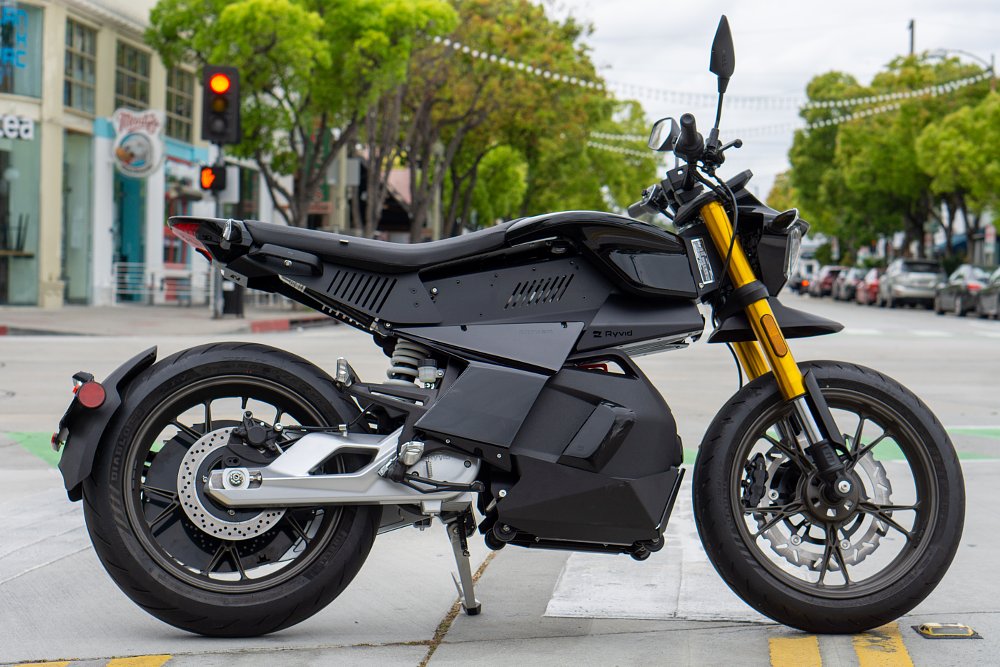
With that said, the Anthem isn’t without its misses. The chassis is too taut, the seat is far from plush, and the price tag is knocking on the door of $9,000. I often spring for the up-spec trim of any model, but in the commuter space, I prefer softer suspension, softer brakes, a softer seat, and a softer price tag. I know I'm not the only one. But, it's worth noting, for all the e-mobility haters out there, that the Anthem's electric drivetrain isn't one of its shortcomings. It's by and far one of it's strengths. It's also worth acknowledging that the Anthem is just Ryvid’s first entry in the two-wheeled space. With more models in the pipeline, I can’t wait to see what the startup cooks up next.
| 2023 Ryvid Anthem Launch Edition | |
|---|---|
| Price (MSRP) | $8,995 |
| Drivetrain | 72V air-cooled brushless, DC |
| Claimed horsepower |
10 (7.5 kW) continuous, 20 (14 kW) peak
|
| Frame | Folded stainless steel |
| Claimed range | 75 miles city; 46 miles (at 55 mph) and 35 miles (at 70 mph) highway |
| Claimed battery capacity | 4.3 kWh |
| Claimed charge time | 3.25 hours @ 110V; 1.85 hours @ 220V/Level 2 |
| Front suspension | 51 mm fork, adjustable for compression and rebound damping; 3.9 inches of travel |
| Rear suspension | Monoshock, adjustable for spring preload, compression, and rebound damping; 1.3 inches of travel |
| Front brake | Single four-piston caliper, 320 mm disc, no ABS |
| Rear brake | Two-piston caliper, 240 mm disc, no ABS |
| Rake, trail | 26 degrees, 6.0 inches |
| Wheelbase | 52.0 inches |
| Seat height | 30-34 inches |
| Tires | Pirelli Diablo Rosso IV, 120/70Z17 front, 160/60R17 rear |
| Claimed weight | 313 pounds |
| Available | Now |
| Warranty | 24 months (parts and battery); Limited lifetime (frame) |
| More info | ryvid.com |




